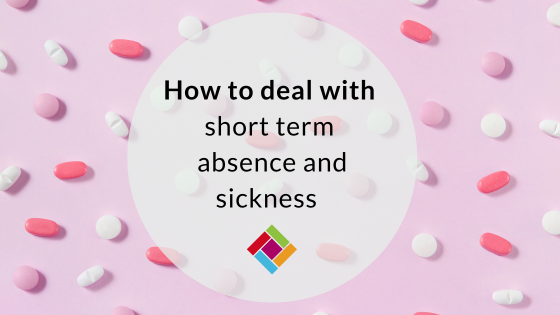
Staff absences due to illness or other reasons can be a major problem for small businesses, especially when frequent. The odd sick days here and there soon add up and can become a real issue if left unchecked. According to reports, short-term absences cost UK businesses billions of pounds each year. Therefore, it is crucial for small business owners to have strategies in place to manage employee absences effectively. Here’s our practical guidance on how to deal with short-term absence and sickness in your business. By implementing the tips, you can minimise the impact of employee absences on your small business and ensure smooth operations.
What can you do to tackle short-term absence and sickness?
1. Review your sickness policy and procedures
Many of us have come to rely on alternative means of communication such as Zoom or WhatsApp whilst working remotely, in some of the businesses we work with it has become the norm for an employee to report their absence via a text message first thing in the morning. The issue with this is that a text can be easily overlooked by the manager and also removes any accountability from the staff member.
This means that now could be a good time to go back and review your sickness policy – what are staff expected to do?
Standard practice is to let a manager know via a telephone conversation before a specific time on the day of the absence. Whilst the ways in which some of us now work may have changed, it is a good idea to revert back to old practices and remind staff of this procedure.
The benefits of calling in and actually speaking to a manager to report an absence mean that nothing gets missed and that direct communication is less likely to encourage ‘sickies.’
2. Hold a return-to-work meeting
Although it may seem excessive to meet with staff returning from a short-term absence, it can benefit your business in the long term. Absences can soon build up and potential issues can be missed if it’s not properly logged and addressed.
Set up a meeting with the staff member when they return to the workplace. Use this to talk through how they are feeling, identify what caused the absence (if not obvious), and if any temporary workplace adjustments are needed to aid recovery.
Listen to any suggestions they may have especially if their illness was caused or exacerbated by work. This conversation can make a big difference, especially if an employee is struggling with their well-being. Once again it also registers the absence and helps to make staff accountable.
3. Look at your wellbeing policy
Does your business have a wellbeing policy that looks after staff? A good policy can help employees balance work in a positive way and avoid unnecessary absences.
CIPD has some useful factsheets on how to create a well-being policy (you can also read our guide to wellbeing resources).
4. Consider an OH referral
If short-term absences persist or you are concerned there is an underlying reason for the absence but don’t know how it impacts work, then you might want to consider referring the employee to Occupational Health.
OH should be able to provide you with more information on the employee’s condition and how it might impact their work. It can also advise on ways to support an employee and reasonable adjustments you might be able to consider to adapt your workplace.
We’ve got a free staff wellbeing eBook with lots of useful guidance and information and our consultants can support managers in having these conversations and also capturing the right information in a return-to-work form.